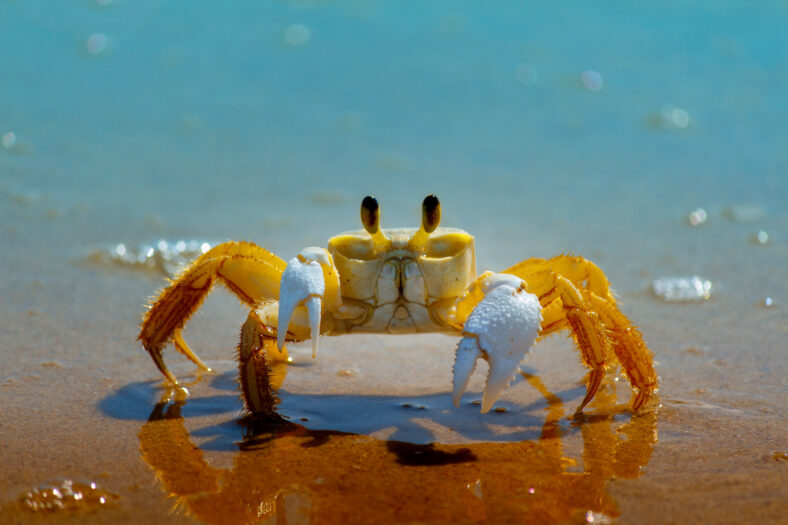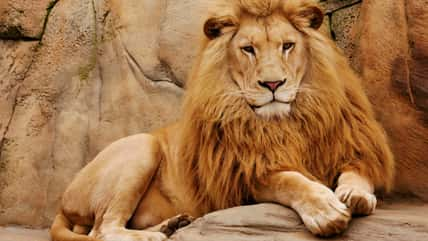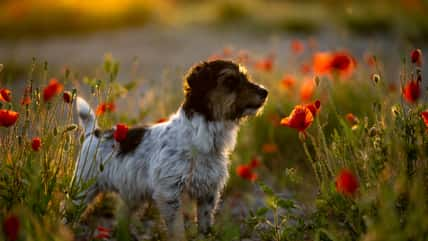Ghost Crabs Contributed To The Loss Of Almost 30% Of Threatened Baby Turtles On This Island

At Thevenard Island, which is located on the northwest coast of Australia, ghost crabs contributed to the loss of almost 30 percent of flatback turtle hatchlings, according to new research.
Flatback turtles are a threatened species. They are listed as vulnerable in Australia. Out of all the sea turtle species, they are the least endangered one because there is not much of a demand for their meat. Flatback turtles spend the majority of their time in Australian waters and only nest in northern Australia.
Sea turtles arrive on land for a brief period to lay their eggs on sandy beaches. Then, they return to the sea, leaving the eggs to incubate for seven to 10 weeks. The turtle eggs and hatchlings face significant danger from a variety of predators.
“Other studies have reported on the predation of flatback turtles in the region, but this research is the first to provide quantified predation rates on both eggs and hatchlings and the first for Thevenard Island,” said Dr. Casper Avenant, a lecturer at Edith Cowan University (ECU).
In the recent study, zero predation of the eggs was found, which was surprising. It suggested that the nest locations of flatback turtles played a role in keeping the eggs safe.
“Females select nest locations that may not be easily accessible to ghost crabs, or the composition of flatback’s eggshells may deter egg predation. All eggs were accounted for during the study on Thevenard Island, and no nest showed any signs of disturbance from predation,” Dr. Avenant said.
However, about 30 percent of hatchlings were hunted primarily by ghost crabs but also by Caspian terns and silver gulls. Monitor lizards and invasive species like foxes are also skilled at digging up sea turtle nests.
Ghost crabs are omnivores that feed at night. They are largely nocturnal to lower the risk of getting eaten by shorebirds and gulls.
When they do leave their burrows during the daytime, they change their color ever so slightly to better match the sand in their environment.

Sign up for Chip Chick’s newsletter and get stories like this delivered to your inbox.
Their diet is often influenced by the types of beaches they live on. For example, crabs on oceanfront beaches typically feed on bean clams and mole crabs, while crabs on more protected beaches target turtle eggs and hatchlings.
At least the flatback turtles on Thevenard Island are faring better than loggerhead turtles along western Australia’s Ningaloo coast.
More than 35 percent of loggerhead eggs in nests were preyed upon at Ningaloo. Of the hatchlings that emerged, 45 percent were hunted.
Overall, studying the levels of predation of marine turtle hatchlings can help inform conservation efforts and mitigation strategies, especially as marine creatures in this region face an increased amount of human-induced impacts.
The study was published in the journal Marine Biology.
More About:Animals





